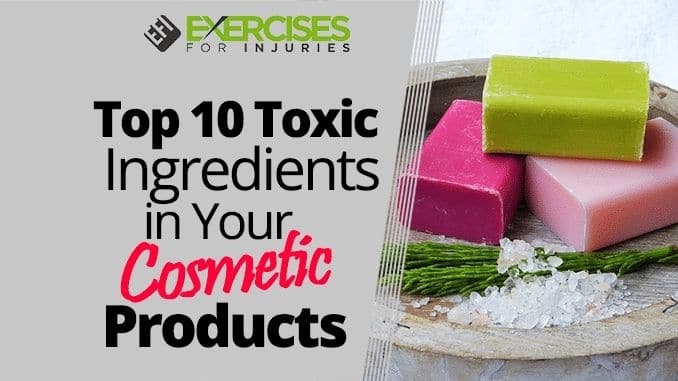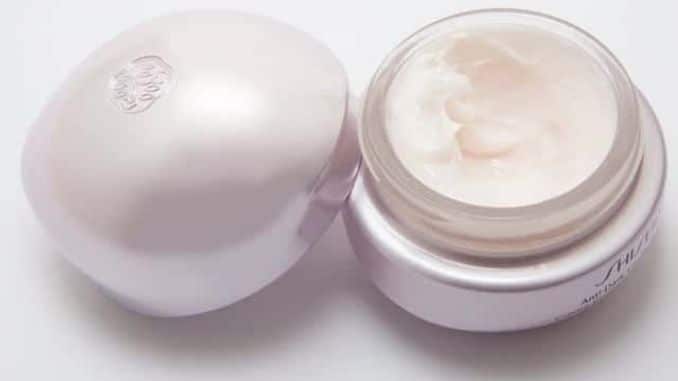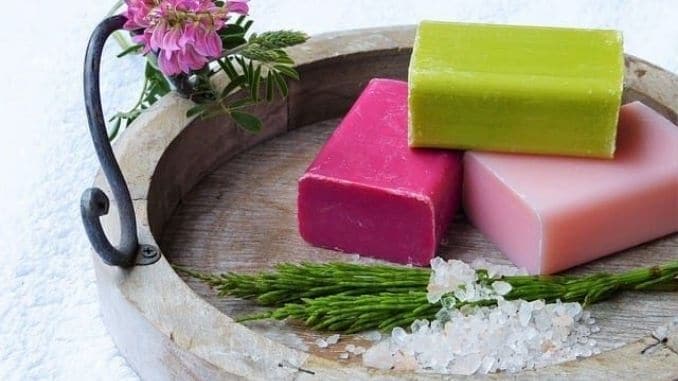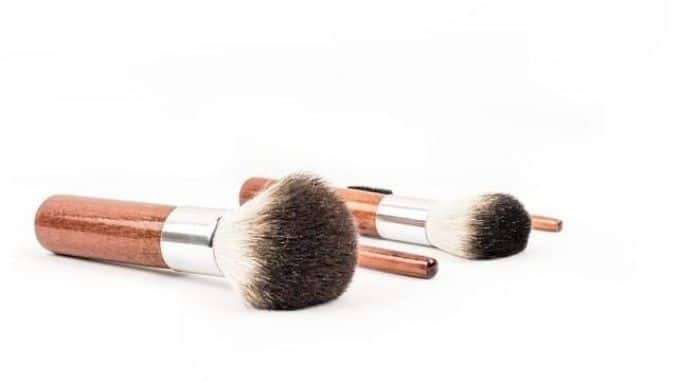
Those face lotions, creams and cleansers. They’re on the store shelves, so surely they’re safe, right?
Not necessarily. Did you know that the United States Food and Drug Administration (FDA) doesn’t test skin care products before companies release them on the market? It’s up to the companies themselves to be sure these products are safe and, let’s face it — sometimes, they’re not as careful as they should be.

Here’s an example: In 2012, the FDA reported that they found trace amounts of lead in 400 popular lipsticks. Five of those made by L’Oreal and Maybelline ranked among the top 10 most contaminated as well as two made by Cover Girl and two by NARS.
Of course, toxic ingredients in your cosmetics are toxic to us. The National Resources Defense Council (NRDC) says that even low-level exposure can cause neurological and cardiovascular disease as well as infertility and decreased kidney function.
Unfortunately, that’s just the tip of the iceberg. There are other potentially toxic ingredients in our lotions, creams, anti-aging serums, conditioners, perfumes, cleansers and more. Yes, these ingredients are often present in really small amounts, but we use these kinds of products several times a day, every day, gradually accumulating exposure, which could be detrimental to our health.
The skin is the body’s largest organ, and it is capable of absorbing the ingredients we put on it. Below, we share the 10 most toxic ingredients you’ll find in many skin care items and how you can choose safer alternatives.
Testing Finds Toxic Chemicals in Skin Care and Cosmetic Products
You’d think that the FDA would be involved in making sure that toxic ingredients in your cosmetics are completely safe, but according to the law, “Cosmetic products and ingredients are not subject to FDA premarket approval authority, with the exception of color additives.”
The result is that manufacturers can create solutions as they wish, without submitting the formulas to the FDA or any regulatory body for approval before releasing them on the market. Of course, companies want to make products that we feel good using, but they can cut corners now and then, potentially putting us at risk.
In a 2012 study of 213 products, for example, researchers found significant levels of potentially toxic chemicals like parabens, phthalates, fragrances and more. Many of the chemicals are known to disrupt hormone function in the human body and have been linked to health problems.
A year earlier, “Environmental Defence” out of Canada tested the makeup bags of six Canadian women. They ended up with 49 makeup items, including foundations, concealers, powders, blushes, bronzers, mascaras, eyeliners, eye shadows and lipsticks or glosses. They were looking for heavy metals toxic to humans and classified four as being of most concern: arsenic, cadmium, lead and mercury.
On average, they found that all of the products contained two of these four metals. Would you be surprised to learn that Benefit Benetint Pocket Pal contained the most? The Benefit Benetint lip gloss also contained the highest level of lead — more than 10 times the limit set by Health Canada.
These and other studies reveal surprising results — that our products may not be as safe as we thought. So, what can we do?
How to Choose Safer Products
To reduce your exposure to toxic ingredients in your cosmetics, you need only take the following two steps:
- Read labels and avoid products with the most dangerous ingredients.
- Buy from companies that are more conscientious about the ingredients they use.
First, we need to get used to turning the box or bottle around and reading the ingredient list. Products that contain ingredients like the 10 of the most toxic ingredients in your cosmetics are best avoided.
As you start reading labels, you may find yourself getting discouraged as there are a lot of products out there with potentially dangerous chemicals. Fortunately, you can find better ones with just a little bit of research.
Some of the best places to look for safer products are health food stores, organic or select departments in grocery and department stores and on organic and natural beauty websites devoted to finding safer products.
Transforming Your Beauty Routine: The Science Behind Safer Cosmetic Choices
If you make these changes, will it be worth the effort? A recent study suggested that it will be. Scientists at University of California, Berkeley; Clinica de Salud del Valle de Salinas; and a team of researchers from the CHAMACOS Youth Community Council gave teen participants personal care products that were free of chemicals like some of those listed below. They recruited teens because their young bodies are more vulnerable to chemical exposures and may be more affected by ingredients that interfere with hormone function.
At the beginning of the study and again after the participants had used the safer products for three days, the scientists tested urine samples. The results showed:
- Levels of diethyl phthalate, commonly found in fragrances, dropped by 27 percent
- Levels of methyl and propyl parabens — used as preservatives in cosmetics — dropped by 44 and 45 percent respectively
- Triclosan, found in antibacterial soaps and some toothpaste, fell 36 percent
- Benzophenone-3 (BP-3), found in sunscreens as “oxybenzone,” also fell 36 percent
These results were gathered after only three days, so you can imagine what kind of difference these changes could make over months or years.
10 of the Most Toxic Ingredients in Your Cosmetics
Take a look at the products in your home and see if you find any of these ingredients. If you do, try to choose safer products the next time around.
1. Phthalates
Also called “plasticizers,” these ingredients are pervasive in cosmetic products like fragrances, hair sprays, lotions and deodorants and are also used in vinyl flooring, adhesives, automotive plastics and more.
In population studies, the Centers for Disease Control and Prevention (CDC) found widespread exposure to these chemicals at troubling levels. The subgroup with the highest level of exposure? Women of childbearing age — because of personal care product use:
“Research has found that adult women have higher levels of urinary metabolites than men for those phthalates that are used in soaps, body washes, shampoos, cosmetics and similar personal care products,” the CDC stated.
Phthalates disrupt hormone function in the body and have been linked with type 2 diabetes, asthma, fertility problems, developmental problems and more. Watch out for ingredients like dibutyl phthalate (DBP), butylbenzylphthalate (BBP) and di (2-ethylhexyl) phthalate (DEHP).
2. Parabens
These are preservatives that help cosmetic products last longer on the shelf. You’ll find them in body washes, hair products, facial cleansers, makeup products and more. Like phthalates, they disrupt hormone function and have been linked with breast cancer as well as allergies and contact dermatitis.
Watch out for methyl-, butyl-, ethyl- and propyl-paraben.
3. Synthetic Fragrances
When you see the word “fragrance” on the ingredient list, you may want to avoid the product. This is a term that companies use to describe how the product smells, but it’s also used to hide “proprietary” fragrance solutions that can include a number of unnamed chemicals.
The problem is that you have no way of knowing which chemicals are in the solution because the company doesn’t have to tell you. Those with sensitive skin beware: fragrance chemicals are some of the most common allergy-causing chemicals out there. They’ve been linked to hives, dermatitis and other types of allergic reactions.
Look for products that are fragrance-free or that are scented with essential oils or other natural ingredients.
4. DEA, TEA, MEA
You may like how your body wash or shampoo lathers up into a rich foam, but what’s making it do that?
These ingredients are some of the most popular used to create that foaming action. They are ammonia-based compounds that make your products sudsy or creamy. They can also help adjust pH balance.
The bad news is that these ingredients are also used in industrial applications, and they can be irritating to the skin. In time, they can make your skin and hair dryer, which can result in long-term damage and accelerated aging.
Worse, if they come into contact with nitrites — chemicals that can contaminate some cosmetic products. They can form nitrosamines, which are carcinogenic. Avoid diethanolamine (DEA), monoethanolamine (MEA) and triethanolamine (TEA).
5. Formaldehyde-releasing Preservatives
Preservatives used in cosmetic products help to keep them free of bacteria and other dangerous microorganisms. Unfortunately, many of them have been found to release formaldehyde into the air. If you inhale it, that’s not good news, as formaldehyde is a carcinogen.
Watch out for DMDM hydantoin, diazolidinyl urea, imidazolidinyl urea, methanamine, quaternium-15 and sodium hydroxymethylglycinate.
6. Dioxins
When companies make cosmetic products, they usually do so in big factories where large amounts of ingredients are mixed into final solutions by machines. We call this the “manufacturing process,” and unfortunately, it can create potentially dangerous by-products.
These by-products often include dioxins, which are known hormone disruptors. They’ve also been linked to nervous system disorders, birth deformities and even cancer. You won’t find the word “dioxin” on the label, however, because it’s not an official ingredient included in the product — it is formed as a result of the product’s production.
Common cosmetic ingredients that can produce dioxins include triclosan, PEGs and sulfate-based cleansers. Your best bet is to avoid these ingredients to cut down your exposure to dioxins.
7. PEG Compounds
These are petroleum-based compounds that help your moisturizers and lotions to penetrate the skin better and get down into the deeper layers. They can also help thicken a solution and keep the ingredients mixed properly.
As mentioned above, however, polyethylene glycols (PEGs) can create toxic ingredients in your cosmetics, including 1,4-dioxane, a possible carcinogen. Because these ingredients help the solution sink into your skin, they can also be dangerous if there are other unhealthy ingredients present.
Watch for propylene glycol, polyethylene glycols and polyoxyethylene or anything with an “-eth” or “-oxynol” in it.
8. Petrolatum
You’ve likely heard of petroleum jelly, which has been a staple of skin care for decades. But it’s good to remember that this is made from the same substance that your motor oil comes from.
We now know that petroleum products can be contaminated with polycyclic aromatic hydrocarbons (PAHs). These can cause skin irritation and allergies and have been linked in some studies to other health issues. They may also be contaminated with 1,4-dioxane and have been linked in studies to hormone-altering effects.
Petroleum forms a barrier over skin, helping to trap moisture in, but it doesn’t add any moisture, so if skin is dry in the first place, petroleum isn’t likely to help much. The “sealing” action can also exacerbate acne problems.
We have better options for moisturizers today, including shea butter and natural oils. Watch for petrolatum, mineral oil and paraffin wax.
9. Sulfates
Look at any of your cleansers — for body, face and hair — and you’ll likely find sulfates. They are cheap detergents that are frequently used to help get us clean, but they can be harsh on skin and hair. They may exacerbate dryness and can fade hair color and cause the hair strands to become brittle.
Here’s a visual for you: sulfates are also used in garage floor cleaners and engine degreasers. They are known to cause skin and eye irritation and can be contaminated with 1,4-dioxane.
Avoid sodium lauryl sulfate (SLS) and sodium laureth sulfate (SLES). Look for products that are “sulfate-free.”
10. Toluene
If you regularly paint your nails, you may be exposing yourself to these toxic Ingredients in your cosmetics chemical.It comes from crude oil and is found in nail polishes and treatments as well as in some hair dyes. It’s another harsh chemical, however, and is also used in metal cleaners and paints.
Toluene has been linked with reproductive toxicity, organ system toxicity and skin irritation. If you experience some eye irritation or headaches when you visit the nail salon, it may be the toluene that is affecting you. Nail salon workers are particularly at risk for exposure to this ingredient.
Fortunately, safer nail polish options out there now that don’t contain toluene. Look for those that say “toluene-free.”
If you want to trim down your body, get younger, increase your metabolism and energy and heal your pain, then check out the Best Foods That Rapidly Slim & Heal in 7 Days, here!




